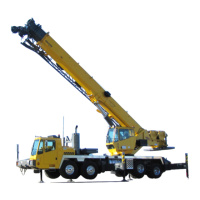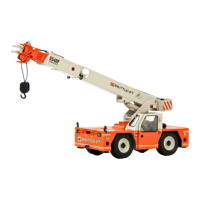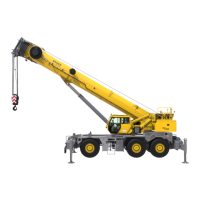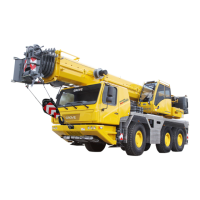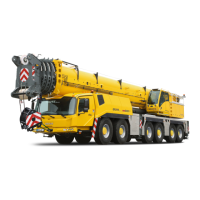Grove Published 02-21-2019, Control # 611-05 2-25
TMS9000-2 OPERATOR MANUAL SAFETY INFORMATION
Set-Up and Operation
During crane use, assume that every line is energized (“hot”
or “live”) and take the necessary precautions.
Set up the crane in a position such that the load, boom, or
any part of the crane and its attachments cannot be moved to
within 6 m (20 ft) of electrical power lines or equipment. This
includes the crane boom (fully extended to maximum height,
radius, and length) and all attachments (boom extensions,
rigging, loads, etc.). Overhead lines tend to blow in the wind
so allow for lines’ movement when determining safe
operating distance.
A suitable barricade should be erected to physically restrain
the crane and all attachments (including the load) from
entering into an unsafe distance from electrical power lines
or equipment.
Plan ahead and always plan a safe route before traveling
under power lines. Rider poles should be erected on each
side of a crossing to assure sufficient clearance is
maintained.
United States OSHA regulations require a flagman when
operating in close proximity to energized power lines.
Appoint a reliable and qualified signal person, equipped with
a loud signal whistle or horn and voice communication
equipment, to warn the operator when any part of the crane
or load moves near a power source. This person shall have
no other duties while the crane is working.
Tag lines should always be made of non-conductive
materials. Any tag line that is wet or dirty can conduct
electricity.
Do not store materials under power lines or close to
electrical power sources.
Electrocution Hazard Devices
The use of insulated links, insulated boom cages/guards, or
proximity warning devices does not assure that electrical
contact will not occur. Even if codes or regulations require
the use of such devices, failure to follow the rules listed here
may result in serious injury or death. You should be aware
that such devices have limitations and you should follow the
rules and precautions outlined in this manual at all times
even if the crane is equipped with these devices.
Insulating links installed into the load line afford limited
protection from electrocution hazards. Links are limited in
their lifting abilities, insulating properties, and other
properties that affect their performance. Moisture, dust, dirt,
oils, and other contaminants can cause a link to conduct
electricity. Due to their capacity ratings, some links are not
effective for large cranes and/or high voltages/currents.
The only protection that may be afforded by an insulated link
is below the link (electrically downstream), provided the link
has been kept clean, free of contamination, has not been
scratched or damaged, and is periodically tested (just before
use) for its dielectric integrity.
Boom cages and boom guards afford limited protection from
electrocution hazards. They are designed to cover only the
boom nose and a small portion of the boom. Performance of
boom cages and boom guards is limited by their physical
size, insulating characteristics, and operating environment
(e.g. dust, dirt, moisture, etc.). The insulating characteristics
of these devices can be compromised if not kept clean, free
of contamination, and undamaged.
Proximity sensing and warning devices are available in
different types. Some use boom nose (localized) sensors
and others use full boom length sensors. No warning may be
given for components, cables, loads, and other attachments
located outside of the sensing area. Much reliance is placed
upon you, the operator, in selecting and properly setting the
sensitivity of these devices.
Never rely solely on a device to protect you and your fellow
workers from danger.
Some variables you must know and understand are:
• Proximity devices are advertised to detect the existence
of electricity and not its quantity or magnitude.
• Some proximity devices may detect only alternating
current (AC) and not direct current (DC).
• Some proximity devices detect radio frequency (RF)
energy and others do not.
• Most proximity devices simply provide a signal (audible,
visual, or both) for the operator; this signal must not be
ignored.
• Sometimes the sensing portion of the proximity devices
becomes confused by complex or differing arrays of
power lines and power sources.
Do not depend on grounding. Grounding of a crane affords
little or no protection from electrical hazards. The

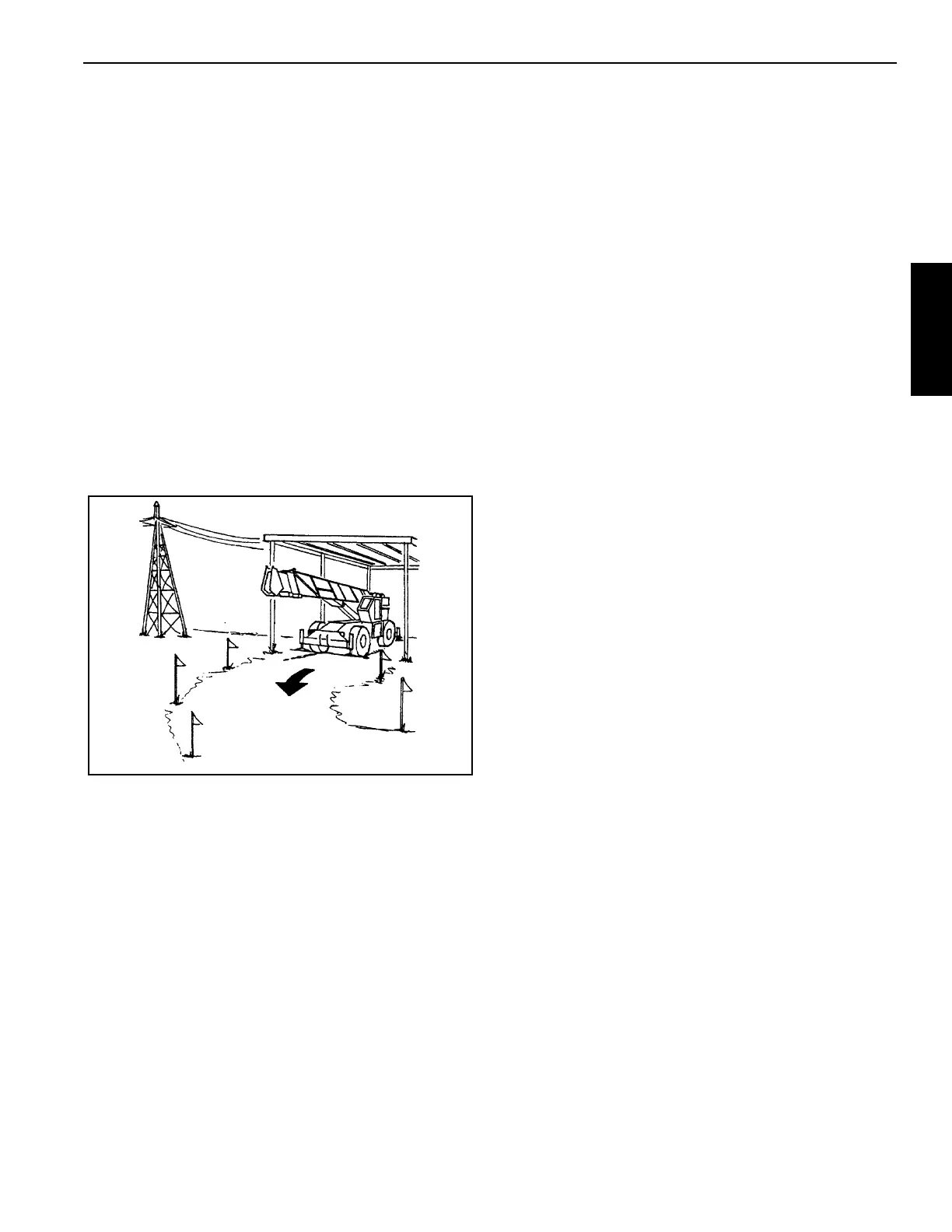